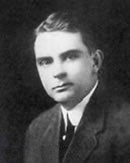
Photo from wikipedia
OBJECTIVE Recent histopathological studies of unruptured intracranial aneurysms (UIAs) have confirmed that aneurysm wall enhancement (AWE) on MR vessel wall imaging (VWI) is related to wall degeneration with in vivo… Click to show full abstract
OBJECTIVE Recent histopathological studies of unruptured intracranial aneurysms (UIAs) have confirmed that aneurysm wall enhancement (AWE) on MR vessel wall imaging (VWI) is related to wall degeneration with in vivo inflammatory cell infiltration. Therefore, pretreatment aneurysm wall status on VWI may be associated with recurrence after endovascular treatment. METHODS VWI with gadolinium was performed on 67 consecutive saccular UIAs before endovascular treatment between April 2017 and June 2021. The mean (range) follow-up period after treatment was 24.4 (6-54) months. AWE patterns were classified as circumferential AWE (CAWE), focal AWE (FAWE), and negative AWE (NAWE). The authors retrospectively investigated the relationship between aneurysm recurrence and AWE patterns, as well as conventional risk factors. RESULTS Sixty-seven patients with 67 saccular UIAs were eligible for the present study. AWE patterns were as follows: 10 CAWE (14.9%), 20 FAWE (29.9%), and 37 NAWE (55.2%). Follow-up MRA detected aneurysm recurrence in 18 of 69 cases (26.1%). Univariate analysis identified maximum diameter (mean ± SD 5.8 ± 2.2 mm in patients with stable aneurysms vs 7.7 ± 3.8 mm in those with unstable aneurysms, p = 0.02), aspect ratio (1.4 ± 0.5 vs 1.1 ± 0.4, p < 0.01), aneurysm location in posterior circulation (4.1% vs 27.8%, p < 0.01), volume embolization ratio (29.6% ± 7.8% vs 25.2% ± 6.1%, p = 0.02), and AWE pattern (p = 0.04) as significant predictive factors of recurrence. Among the 3 AWE patterns, CAWE was significantly more frequent in the unstable group, but no significant differences in stability of the treated aneurysms were observed with the FAWE and NAWE patterns. In multivariate logistic regression analysis, CAWE pattern (OR 14.2, 95% CI 1.8-110.8, p = 0.01) and volume embolization ratio ≥ 25% (OR 8.6, 95% CI 2.1-34.3, p < 0.01) remained as significant factors associated with aneurysm stability after coiling. CONCLUSIONS VWI before coiling provides novel insights into the stability of treated aneurysms. Aneurysms with the CAWE pattern on VWI before coiling may be less stable after treatment.
Journal Title: Journal of neurosurgery
Year Published: 2022
Link to full text (if available)
Share on Social Media: Sign Up to like & get
recommendations!